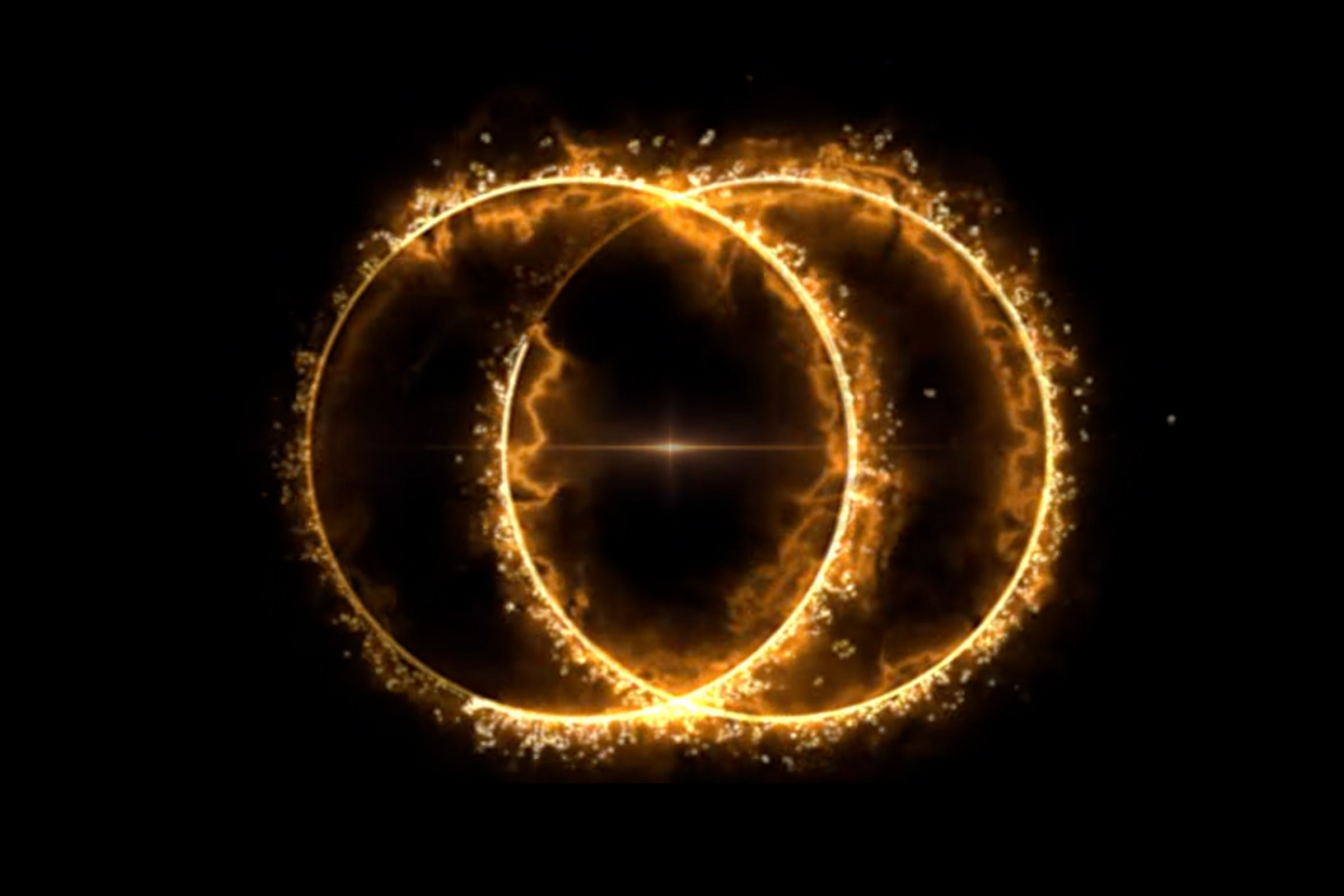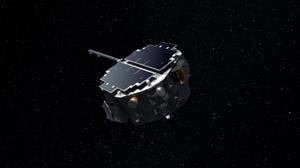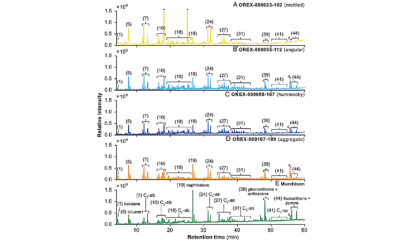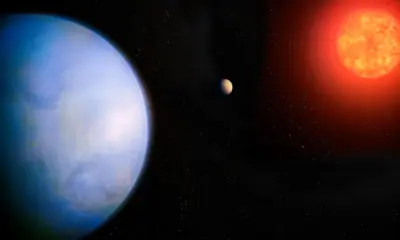Science
Astronomers Discover Massive Twin Cosmic Rings, Unveiling Mysteries

Astronomers have made a remarkable discovery, unveiling an enormous dual-ring structure located approximately 7.5 billion light years from Earth. This expansive formation, known as a double-ring Odd Radio Circle (ORC), spans hundreds of thousands of light years and emits a stunning glow detectable in radio wavelengths. The findings, documented in a recent study published in the Monthly Notices of the Royal Astronomical Society, provide insights into a class of cosmic phenomena that continue to baffle scientists.
The discovery of these Odd Radio Circles is particularly significant as only a handful have been identified since their initial observation six years ago. The newly identified ORC, designated RAD J131346.9+500320, is only the second known to feature two distinct rings. These structures are believed to consist of magnetized plasma and are exclusively observable in radio light, often encircling galaxies at their centers. Their dimensions can exceed dozens of times the diameter of the entire Milky Way, yet the mechanisms behind their formation remain largely unexplained.
Ananda Hota, the lead author of the study and an assistant professor at the University of Mumbai, described ORCs as “among the most bizarre and beautiful cosmic structures we’ve ever seen.” He emphasized that these formations could provide crucial information about the co-evolution of galaxies and supermassive black holes.
The newly identified ORC resides within a densely populated region of space known as a galaxy cluster. This area consists of multiple gravitationally bound galaxies in close proximity to one another, suggesting that the formation of ORCs may result from interactions between surrounding plasma and the energetic jets emitted by black holes at the centers of galaxies. Hota speculated that the black hole jet could create magnetized plasma clouds, which are subsequently energized by massive explosions near the galactic core, causing them to glow as radio rings.
Coauthor Pratik Dabhade, an assistant professor in the astrophysics division at the National Centre For Nuclear Research in Warsaw, Poland, noted, “These discoveries show that ORCs and radio rings are not isolated curiosities — they are part of a broader family of exotic plasma structures shaped by black hole jets, winds, and their environments.”
The identification of ORCs fits into a broader category of cosmic phenomena referred to as the “low-surface brightness universe.” These objects, which were once concealed from view, are now being revealed through the latest advancements in powerful radio telescopes. Among other discoveries in this hidden realm are a supernova remnant exhibiting an almost perfect spherical shape and unique stellar objects known as Wolf-Rayet stars, which burn intensely for a brief duration in cosmic terms.
As astronomers continue to explore these intriguing structures, the hope is that further research will illuminate the processes that govern their formation and the fundamental workings of the universe. The ongoing study of ORCs not only enhances our understanding of cosmic evolution but also inspires curiosity about the mysteries that remain in the vast expanses of space.
-

 Technology5 months ago
Technology5 months agoDiscover the Top 10 Calorie Counting Apps of 2025
-

 Health2 months ago
Health2 months agoBella Hadid Shares Health Update After Treatment for Lyme Disease
-

 Health3 months ago
Health3 months agoErin Bates Shares Recovery Update Following Sepsis Complications
-

 Technology4 months ago
Technology4 months agoDiscover How to Reverse Image Search Using ChatGPT Effortlessly
-

 Technology1 month ago
Technology1 month agoDiscover 2025’s Top GPUs for Exceptional 4K Gaming Performance
-

 Technology2 months ago
Technology2 months agoElectric Moto Influencer Surronster Arrested in Tijuana
-

 Technology5 months ago
Technology5 months agoMeta Initiates $60B AI Data Center Expansion, Starting in Ohio
-

 Technology5 months ago
Technology5 months agoRecovering a Suspended TikTok Account: A Step-by-Step Guide
-

 Health4 months ago
Health4 months agoTested: Rab Firewall Mountain Jacket Survives Harsh Conditions
-

 Lifestyle5 months ago
Lifestyle5 months agoBelton Family Reunites After Daughter Survives Hill Country Floods
-

 Technology4 months ago
Technology4 months agoHarmonic Launches AI Chatbot App to Transform Mathematical Reasoning
-

 Technology3 months ago
Technology3 months agoUncovering the Top Five Most Challenging Motorcycles to Ride




















